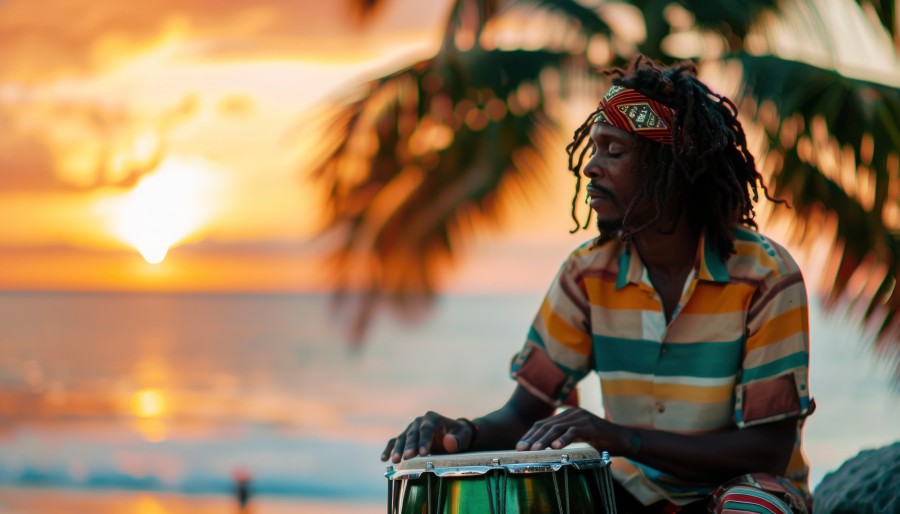Entertainment in the Caribbean
Caribbean Music: From Calypso to Dancehall
Caribbean music is a vibrant tapestry of rhythms, melodies, and stories that have captivated audiences worldwide. Emerging from a region characterized by its cultural diversity, this music reflects the unique histories, struggles, and joys of the Caribbean peoples. From the traditional calypso of Trinidad and Tobago to the globally influential sounds of Jamaican dancehall, the evolution of Caribbean music is a testament to its resilience and creativity.
The Roots: Calypso and Its Storytelling Legacy
Calypso, originating in Trinidad and Tobago during the early 19th century, stands as one of the earliest and most defining genres of Caribbean music. Rooted in the oral traditions of African slaves, calypso became a medium for storytelling, satire, and social commentary. Singers, known as calypsonians, used clever wordplay and double entendre to address societal issues, challenge colonial authorities, and entertain listeners.
The genre gained international recognition in the 20th century with artists like Lord Kitchener and Mighty Sparrow, whose songs showcased calypso’s versatility. Tunes like “London is the Place for Me” and “Jean and Dinah” celebrated cultural identity while reflecting the complexities of migration and modernization. Instruments such as steel pans, which emerged from Trinidad, added a distinct percussive sound that further distinguished calypso on the global stage.
Ska, Rocksteady, and Reggae: Jamaica’s Musical Renaissance
While calypso dominated Trinidad, Jamaica developed its own groundbreaking genres. Ska, characterized by its upbeat tempos and brass instrumentation, emerged in the late 1950s. Artists like The Skatalites and Prince Buster fused American R&B influences with traditional Caribbean rhythms, creating a sound that resonated with the island’s youth.
By the mid-1960s, ska gave way to rocksteady, a slower and more soulful genre. This transition marked a shift in focus toward themes of love, identity, and social consciousness. Artists like Alton Ellis and The Paragons brought a melodic depth to Jamaican music, setting the stage for the rise of reggae in the late 1960s.
Reggae, with its iconic one-drop rhythm, became Jamaica’s most influential musical export. Pioneered by artists such as Bob Marley, Peter Tosh, and Jimmy Cliff, reggae carried messages of resistance, spirituality, and unity. Marley’s “Redemption Song” and Tosh’s “Get Up, Stand Up” remain powerful anthems of social justice and cultural pride.
Soca and the Carnival Spirit
As calypso evolved, it gave birth to soca (soul calypso) in the 1970s. This energetic genre, pioneered by artists like Lord Shorty and Arrow, infused traditional calypso with funk, soul, and Indian musical influences. Soca became synonymous with Carnival celebrations, its pulsating rhythms and infectious melodies driving the festivities.
Songs like Arrow’s “Hot Hot Hot” brought soca to international audiences, making it a staple of dance floors worldwide. Today, artists such as Machel Montano and Kes continue to innovate within the genre, blending soca with electronic, Afrobeat, and pop influences to keep it fresh and dynamic.
Dancehall: The Modern Sound of Jamaica
In the 1980s, dancehall emerged as a more stripped-down and beat-driven evolution of reggae. This genre, characterized by its rapid rhythms and raw lyrical content, reflected the realities of urban life in Jamaica. Artists like Yellowman and Shabba Ranks pioneered the early dancehall scene, combining catchy hooks with themes of love, politics, and street culture.
By the 1990s and 2000s, dancehall reached new heights with artists like Sean Paul, Beenie Man, and Vybz Kartel. Sean Paul’s hits, including “Temperature” and “Get Busy,” introduced the genre to a global audience, blending dancehall with pop and hip-hop elements. Dancehall’s influence is now evident in mainstream music, with artists like Drake, Rihanna, and Major Lazer incorporating its rhythms into their hits.
Some resorts and other luxurious hotels have dancehall saloons where people can gather and enjoy a vibrant nightlife, as well as other entertainment options such as casinos, with slots and machines. For those who prefer to do it from the comfort of their room, Real Money Casinos is their best choice!
Cross-Cultural Collaborations and Global Impact
Caribbean music’s global appeal lies in its adaptability and collaborative spirit. Over the decades, its genres have blended with others to create new musical forms. Reggaeton, for instance, emerged in Puerto Rico by fusing dancehall with Latin American rhythms, becoming a dominant force in global music. Similarly, Afro-Caribbean genres like zouk and kompa have influenced contemporary Afrobeat and electronic music.
Collaborations between Caribbean artists and international stars further highlight the region’s impact. Songs like Rihanna’s “Work,” featuring Drake, or Major Lazer’s “Lean On” showcase Caribbean-inspired rhythms reaching massive audiences. These collaborations not only elevate Caribbean music but also celebrate its enduring influence on global culture.
Preservation and Innovation
Despite its global success, Caribbean music faces challenges in preserving its authenticity. The commercial pressures of the music industry often lead to the dilution of traditional sounds in favor of more marketable, mainstream styles. However, many artists and cultural institutions are committed to preserving the region’s musical heritage.
Festivals like Trinidad’s Carnival, Jamaica’s Reggae Sumfest, and St. Lucia’s Creole Jazz Festival play crucial roles in celebrating and promoting Caribbean music. Additionally, younger artists are embracing their roots while experimenting with new sounds. Jamaican artist Koffee, for example, blends reggae and dancehall with contemporary elements, appealing to both traditional and modern audiences.
Conclusion
From the storytelling brilliance of calypso to the energetic pulse of dancehall, Caribbean music is a rich and ever-evolving art form. Its genres are not just sounds but reflections of history, identity, and resilience. As Caribbean music continues to inspire and influence global culture, it remains a testament to the region’s enduring creativity and spirit. Whether through the steel pan’s echo or the bassline of a dancehall track, the heartbeat of the Caribbean resonates worldwide.







